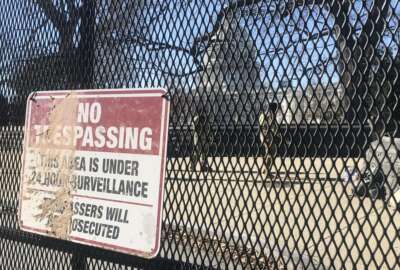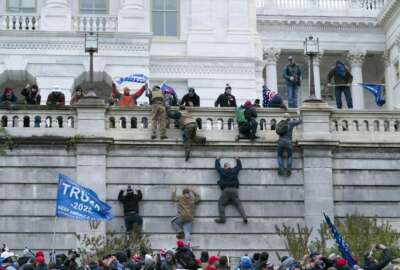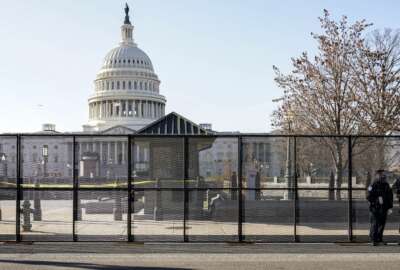
Our edifices give mute testimony to continuity
The inauguration showed continuity reflected in the building where it took place.
Riots and a presidential inauguration have reestablished for Americans the importance of the U.S. Capitol — that is, the architecturally fussy building itself. On one Wednesday, members of Congress were herded to underground safety for hours, forced to evacuate their very chambers. Two Wednesdays later, there they stood in the choreographed meet ‘n’ greet here on the dais, out front, in the sunlight.
It’s all a good reminder of how architecture both reflects and enhances the values of a country and how it projects itself. It’s one reason we have an Architect of the Capitol.
Ironically, this appreciation for the nation’s built symbols occurs when most of the federal workforce is working at home. The edifices stand mostly empty.
Buildings can give a sense of continuity. There is zero continuity between the policies of the Trump administration and the Biden administration. Less than zero. Yet both play out in the same physical space. One day you see this president in the Oval Office, the next day, somebody else. So it’s the same government, one administration following in the precisely same footsteps as the next.
The Capitol by any objective measure is obsolete. Yet the nation chooses to have maintained it for two centuries. Consider that halfway through the Third Reich, Hitler commissioned a new Reich Chancellery, disliking the existing one from the 19th century. He wanted new symbols. By contrast, every morning after a bombing attack on London, Winston Churchill is said to have sought assurance that St. Paul’s grand dome — which looks a lot like our Capitol dome — still stood. It joins the Palace of Westminster and the nearby Abbey as symbols of British continuity.
A travel ad, produced 50 years ago, when full page ads in large-format magazines were themselves works of art, featured a picture of Westminster Abbey’s interior. The headline underneath read, “Tread softly past the long, long sleep of kings.”
Continuity.
Some times over history, changing requirements have required rebuilds and replacements. The Old Executive Office Building next to the White House, for instance, is the second building to occupy that site. But in general, our old republic goes for continuity. Even when the White House was in imminent danger of collapse during the Truman administration, the solution was to basically scoop out the old innards within the limestone shell, and build anew out to the old walls. The architects of the day tried to make the modern interior look as much as they could like the old.
No less than aircraft carriers, U.S. buildings overseas can project American power and prestige. Embassies, though, require careful thought. They’ve got to function as efficient spaces for diplomatic staffs. They must be secure, yet reasonably accommodating to the local and from-the-U.S. visitors that stream in and out. They must meet local codes. They’ve got to represent the United States symbolically, and in good taste that gains some degree of acceptance by the local people.
The State Department is not quite 20 years into a possibly 50-year effort to update, rebuild or replace its embassies around the world. The program was spurred by embassy bombings in Africa during the late 1990s.
I was inspired by an interview with Angel Dizon, a career State Department employee with the blend title of “managing director for program development” He oversees embassy projects all over the world. An intriguing one is going on in New Delhi, India — a diplomatically crucial spot. The embassy there carries the designation of culturally significant building, a list maintained by the Interior Department.
I remarked to Dizon that the late 1950s structure resembles the John F. Kennedy Center for the Performing Arts in D.C. Turns out, according to Dizon, Jacqueline Kennedy was taken with the architecture of the New Delhi embassy. The embassy architect, Edward Durell Stone, was later chosen to design the Kennedy Center. The latter looks like a jumbo reproduction of the former.
State plans to modernize the existing embassy while leaving it architecturally intact. It will add new office and living structures, including a new chancery, at the site, part of a large diplomatic enclave in the vast city. The site will get an overhaul, but retain continuity with the past.
That elegant original building is the architectural opposite of the ornate Capitol. The embassy in its simplicity represents the unified voice America strives to give to the world. Whereas the ornate, almost baroque Capitol seems to reflect the messy and never-ending debates that go on inside the country.
Copyright © 2025 Federal News Network. All rights reserved. This website is not intended for users located within the European Economic Area.
Tom Temin is host of the Federal Drive and has been providing insight on federal technology and management issues for more than 30 years.
Follow @tteminWFED
Related Stories






